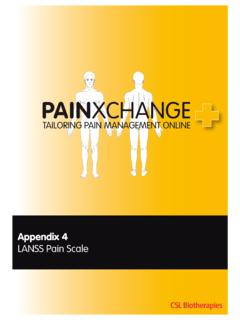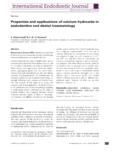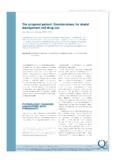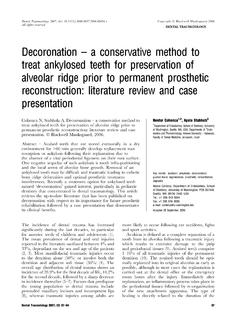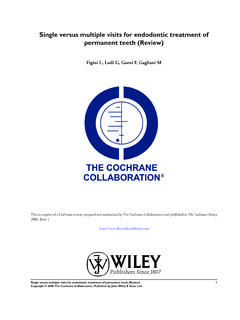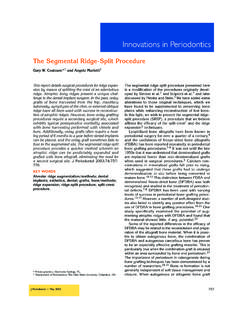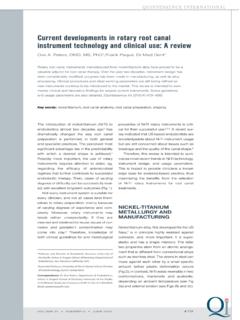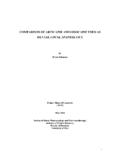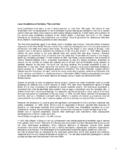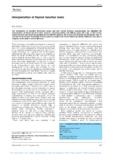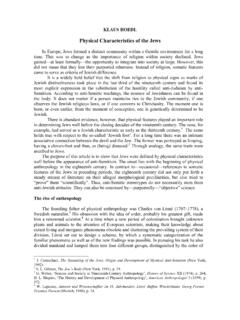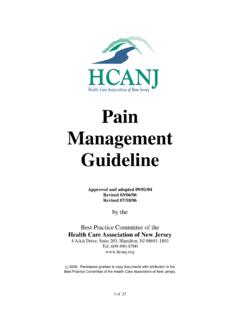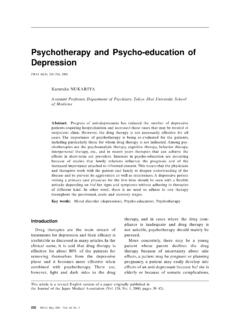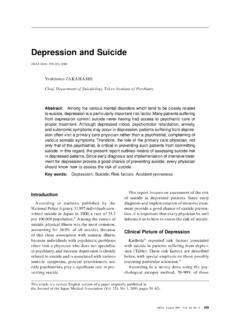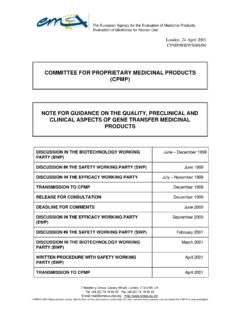Transcription of RESEARCH acupuncture The role of acupuncture in ...
1 BRITISH DENTAL JOURNAL VOLUME 190. JUNE 9 2001611 RESEARCH acupuncturepalate. Psychogenic gagging is induced without direct contact andthe thought of the stimulus, such as a dental intervention, is suffi-cient to induce the reflex. A single aetiological factor is too simplistican explanation. For example, somatic gagging induced by a dentalmirror placed in the mouth should, in theory, be reproduced byother objects. However, many people who gag at the dentist can eat,brush their teeth and place other objects in their own mouths withlittle or no consequence. Other factors have been described which are not necessarily directinducers of gagging, but which increase its risk and its severity inaffected people. These contributing factors include anatomical vari-ations, for example in soft palate anatomy3; medical conditions,such as nasal obstruction4; psychological factors, such as apprehen-sion5and neuroticism6; and dental or iatrogenic factors, such asfaults in denture design related to tongue space, retention, positionof the post dam and freeway ,8 Ramsey et al9postulate thatthe important factors are the past dental experiences and thelearned response.
2 That is to say, that people who have had a baddental experience in the past expect to gag, either consciously orsub-consciously, during future similar events. Consequently theirgagging becomes a conditioned response to the dental et al9believe that it is only the severity of the response thatdistinguishes whether the person actually gags when something isplaced in the mouth or at just the thought of of gaggingSome people avoid dental treatment altogether because of theirproblematic gagging reflex, whilst others have to accept sedation orgeneral anaesthesia in order to cope with dental treatment. A num-ber of strategies have been used in an attempt to control gagging inthe dental setting so that patients can cope with treatment and den-tists can provide it.
3 They include relaxation, distraction and desen-sitisation, psychological and behavioural techniques, sedation, andcomplementary therapies such as hypnosis and aim of this paper is to illustrate the role of acupuncture as amethod of controlling the gag reflex which is safe, quick, inexpen-sive and relatively non-invasive. acupuncture is a system of medicine in which a fine needle isinserted through the skin to a depth of a few millimeters, left inplace for a time, sometimes manipulated and then are two philosophies that of traditional eastern or Chineseacupuncture which is an integral part of traditional Chinese medi-cine and that of western scientific approach. According to Filshieand Cummings, the principal difference between these twoapproaches is the method of diagnosis and the relentless pursuit ofa scientific rationale for treatment.
4 11 Central to the scientificapproach is the formulation of a diagnosis based on best currentpractice and the selection of the most appropriate therapeuticoption. acupuncture is one of a range of treatment options that canThe role of acupuncture in controllingthe gagging reflex using a review of tencasesJ. Fiske,1and C. Dickinson,2 The gagging reflex is a physiological reaction which safeguardsthe airway from foreign bodies. In some people this response isexaggerated to the extent that the acceptance/provision of dentaltreatment is not possible. The aim of this paper is to review therole of acupuncture in controlling gagging as a safe, cheap, quickand relatively non-invasive :Ten people agreed to try ear acupuncture to controlgagging during dental treatment.
5 Prior to treatment the severityof gagging was assessed. acupuncture needles were inserted into aspecific anti-gagging point on each ear, manipulated briefly andleft in situ. Dental treatment was then carried out and theeffectiveness of the acupuncture in preventing gagging wasassessed. After treatment, the needles were removed and thepatient discharged. All acupuncture was carried out by a dentisttrained in its :Four people had a severe gag reflex which madetreatment impossible and six had a very severe reflex which madetreatment impossible and affected their dental attendance. Earacupuncture completely controlled the gag reflex in eight cases(23 treatment episodes) and partially controlled the reflex in twocases (two treatment episodes).
6 Dental treatment could becarried out in all cases and at all visits. The cost of materials was per person per visit. Additional clinical time was in the orderof 2 3 minutes. There were no adverse reactions to the techniqueand, on all occasions, patients were fit to leave the surgery andtravel home :Ear acupuncture was successful in controlling thegag reflex. It is a safe, quick, inexpensive and relatively non-invasive technique. A controlled clinical trial is required toinvestigate any placebo has been defined as an ejectory contraction of the mus-cles of the pharyngeal sphincter1. It is a normal protective reflexdesigned to protect the airway and remove irritant material from theposterior oropharynx and the upper gastrointestinal tract.
7 In someindividuals this protective reflex is exaggerated causing difficultiesin the provision and acceptance of routine dental of gaggingThe aetiology of gagging has been categorized as somatic orpsychogenic2. Somatic gagging is induced by touching a trigger areain the oral cavity such as the lateral border of the tongue or the1*Senior Lecturer and Honorary Consultant in Special Care Dentistry, 2 ClinicalAssistant, Department of Sedation and Special Care Dentistry Floor 26, Guy'sTower, London SE1 9RT*Correspondence to: J REFEREED PAPERR eceived ; Accepted British Dental Journal2001; 190: 611 613612 BRITISH DENTAL JOURNAL VOLUME 190. JUNE 9 2001 RESEARCH acupuncturebe employed in an effort to control acupuncture was selected for the following reasons: There is a specific, recognised anti-gagging point on the ear (Fig.)
8 1) The needles are not disturbed during access to the mouth fordental treatment The needles are out of the patient s line of vision a bonus foranyone with a dislike of needlesThe technique involves the insertion of one, fine, single-use dispos-able needle of 7 mm length into the anti-gagging point of each ear toa depth of 3 mm. The needles are manipulated for 30 seconds priorto carrying out dental treatment. The needles remain in situthroughout treatment and are removed before the patient isdischarged. The patient does not require an escort and is not incon-venienced in any way following people, with an exaggerated gag reflex, who had been referredto a specialist sedation unit because their gag reflex prevented con-ventional dental treatment agreed to try ear acupuncture to controlthe reflex.
9 The technique was explained and informed consentobtained in all cases. The magnitude of the gag reflex was assessedusing the Gagging Severity Index (GSI)10prior to acupuncture (Table 1). The acupuncture needles were inserted, as describedabove, and dental treatment commenced. The Gagging PreventionIndex (GPI)10was used to assess the effectiveness of the earacupuncture in controlling the reflex and allowing dental treatmentto take place (Table 2). On the completion of treatment, the needleswere removed. All acupuncture treatments were carried out by onedentist trained in dental men and two women had ear acupuncture in an effort to con-trol their gag reflex so that they could accept dental treatment.
10 Theirages ranged from 40 65 the GSI, four people rated IV with a severe reflex that madetreatment impossible and six people rated V with a very severe reflexwhich made treatment impossible and affected their dental atten-dance (Fig. 2). Prior to referral, two people had avoided treatment,six people were only able to receive treatment with intravenoussedation and two people had not been able to receive treatment at allbecause of their exaggerated gag ear acupuncture , these ten people underwent a total of 25dental treatment episodes. Procedures carried out included scaling,root planing, impressions, fillings, extractions, adhesive bridgeplacement, a molar endodontic treatment and a biopsy of the lateralborder of the cost of materials for ear acupuncture was or Eurosper person per treatment episode.
